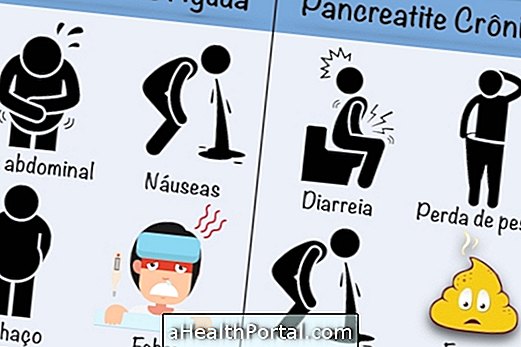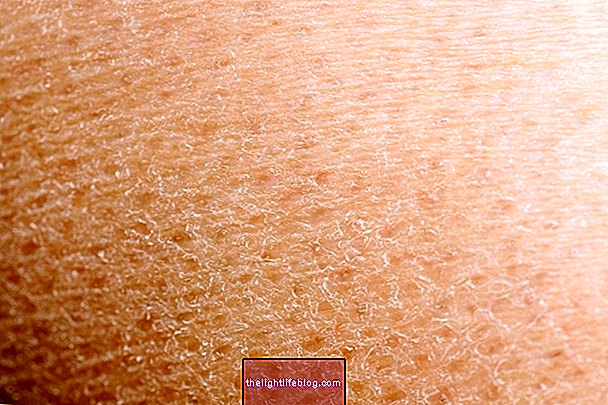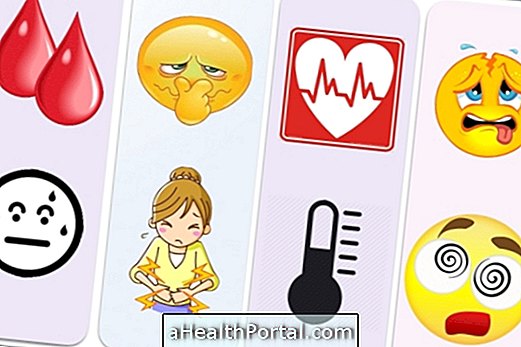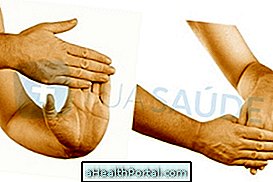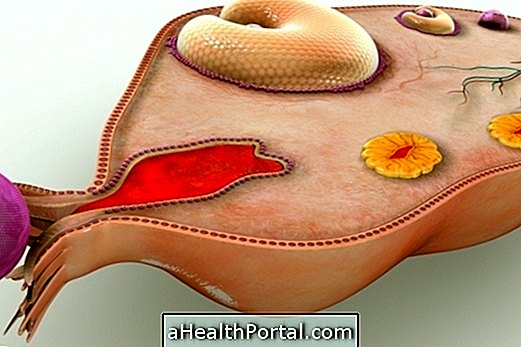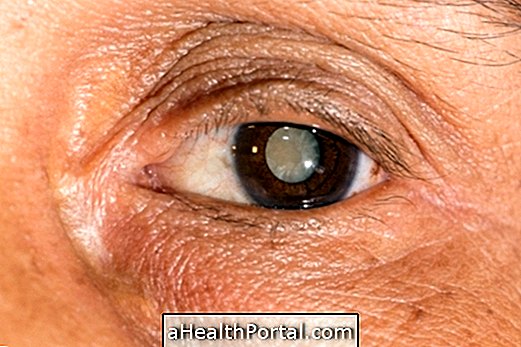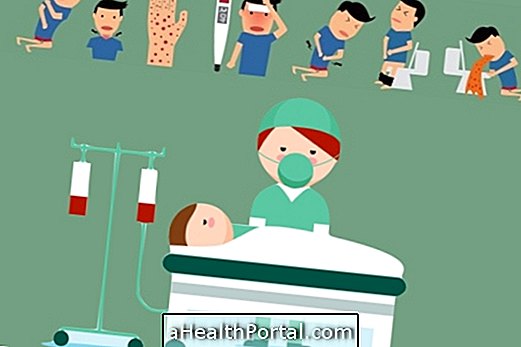There are several causes that may be the cause of a pain in the jaw, such as temporomandibular dysfunction, dental problems, sinusitis, bruxism, osteomyelitis or neuropathic pain, which can also cause other symptoms that can help identify the appropriate diagnosis and treatment.
The most common changes that cause pain in the jaw are:
1. Temporomandibular dysfunction
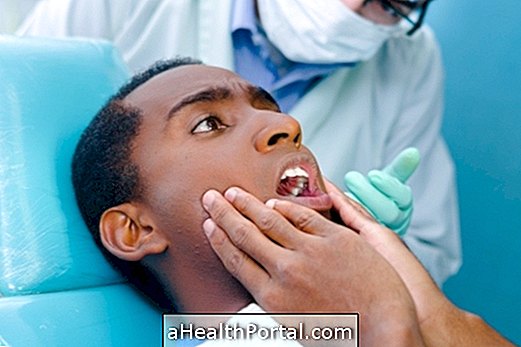
This syndrome is caused by a disturbance in the temporomandibular joint, which is responsible for joining the jaw to the skull, causing discomfort in the face and jaw, persistent headache, ear pain, cracking when opening the mouth or even sensation of vertigo and tinnitus.
The most common causes of temporomandibular dysfunction are to tighten your teeth during sleep, to have had some blows in the area or to have a habit of nail biting, for example. Learn more about this issue.
What to do
The treatment for pain in the temporomandibular joint consists of the placement of a rigid plaque that covers the teeth for sleep, physical therapy, analgesic and anti-inflammatory drugs in the acute phase, relaxation techniques, laser therapy and surgery. See each of these treatments in detail.
2. Headache in salvos

Headache is a rare condition characterized by a very severe headache, which affects only one side of the face, and may also cause redness, tearing and pain in the eye on the same side of the pain, which may radiate all over the face, including the ear and the jaw. Learn more about cluster headache.
What to do
The treatment of migraine headache can be done with medications such as non-steroidal anti-inflammatory drugs, opioids and the use of a 100% oxygen mask administered during times of crisis. In addition, reducing the consumption of foods such as sausages and bacon, which are high in nitrates and can make the pain worse, may help prevent the onset of a crisis.
3. Sinusitis

Sinusitis is an inflammation of the sinuses that causes symptoms such as headache, runny nose and a feeling of heaviness on the face, especially on the forehead and the cheekbones, because it is in these places that the sinuses are located. Learn how to identify this disease.
What to do
Sinusitis treatment should be guided by a general practitioner or otolaryngologist, who may recommend the use of nasal sprays, analgesics, oral corticosteroids or antibiotics, for example.
4. Dental Problems

Other factors that can cause pain in the jaw are the presence of some dental problem such as gingival disease, abscesses or cavities that usually cause intense pain at the site of the problem that can radiate to the jaw.
What to do
The treatment depends on the dental problem that is at the origin of the pain, so the ideal is to go to the doctor who can prescribe drugs for pain and inflammation or antibiotics or even resort to a dental procedure.
5. Trigeminal Neuralgia

Trigeminal Neuralgia is a strong facial pain that occurs due to trigeminal nerve dysfunction, responsible for transporting sensitive information from the face to the brain and controls the muscles involved in chewing. This disease causes symptoms such as severe pain in any lower region of the face.
What to do
Treatment of trigeminal neuralgia is done with analgesic medicines like paracetamol or dipyrone, anticonvulsants such as carbamazepine or gabapentin, muscle relaxants such as diazepam or baclofen, or antidepressants such as amitriptyline. In addition, surgery may also be necessary. Learn more about treatment.
6. Bruxism

Bruxism consists of the unconscious act of constantly squeezing or grinding the teeth, which may occur both during the day and at night, causing symptoms such as tooth surface wear, pain when chewing and opening mouth and joints of the jaw, pains head on waking or even tiredness. Here's what to do to control bruxism.
What to do
The treatment of bruxism is done with relaxation sessions, since this condition can be caused by the excess of anxiety, and with the use of a dental protection plate, that must be placed between the teeth to sleep.
7. Neuropathic pain

Neuropathic pain results from an injury to the nervous system that can be triggered by infections such as herpes or diseases such as diabetes, or result from a dysfunction of the nervous system. The most common symptoms that can occur in neuropathic pain are pain that may be accompanied by edema and increased sweating, changes in blood flow to the site, or changes in tissues such as atrophy or osteoporosis.
What to do
Treatment of neuropathic pain consists of the use of anticonvulsant drugs such as carbamazepine or gabapentin, central acting analgesics such as tramadol and tapentadol or even antidepressants such as amitriptyline and nortriptyline, which in addition to relieving pain, also act in the depression that is very common in people with chronic pain.
In addition, physical therapy, occupational therapy, and electrical and thermal stimuli can be used to improve physical function and help one to gain functionality. In more severe cases of neuropathic pain, surgery may be necessary.
8. Osteomyelitis

Osteomyelitis is a bone infection that can be caused by bacteria, fungi or viruses. This infection can happen by direct contamination of the bone, through a deep cut, fracture or implant of a prosthesis or through the blood circulation, during the course of an infectious disease, like an abscess, endocarditis or tuberculosis, for example. Learn how to identify osteomyelitis.
The most common symptoms that can occur in this disease are intense bone pain, swelling, redness and heat at the affected site, fever, chills and difficulty moving the affected site.
What to do
Osteomyelitis can be treated with the use of antibiotics at high doses and for a prolonged time. Surgery may also be indicated in some cases to remove dead tissue and facilitate recovery.


